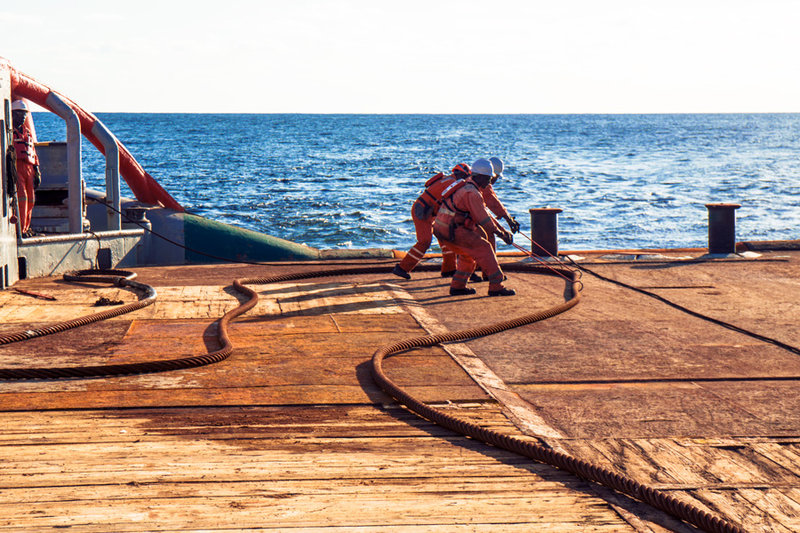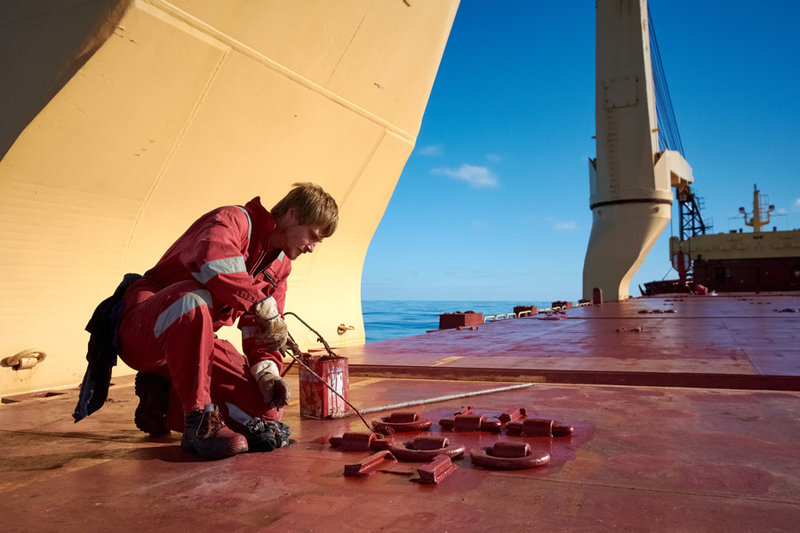Regulation
Are merchant seafarer training standards fit for purpose?
The IMO STCW Convention and Code governs training standards for around two million merchant seafarers. Julian Turner asks the IMO and the International Chamber of Shipping whether it is time for a review, to ensure the regime keeps pace with industry trends
Image: Denys Yelmanov / Shutterstock.com
Adopted in 1978,
and enforced six years later in April 1984, the IMO STCW Convention was the first to establish basic minimum requirements related to training, certification and watchkeeping for officers and ratings on an international level, which all countries are obliged to meet or exceed.
Previously, such standards were established by individual governments, usually without reference to practices in other countries and jurisdictions, and as a result standards and procedures varied widely.
The regime established by the STCW Convention also affords seafarers mobility in the pursuit of their livelihoods, as their certificates can be recognised and used to obtain employment around the world, enabling the shipping industry to attract and retain a truly global workforce.
The Convention is, by its nature, a work in progress that is open to periodic revision, ensuring it remains fit for purpose in terms of skills, training, working practices and technological trends.
Major amendments were made to the Convention in 1995 in order to bring it up to date and in part to respond to critics who identified vague phrases that were open to different interpretations.
The amendments entered into force in February 1997, dividing the technical annex into regulations by chapter and establishing a STCW Code comprising mandatory and recommended directives, to which many technical regulations were transferred, making the future task of revising them simpler.
“The structure of the STCW Convention and Code by functions makes it relatively straightforward to update and amend individual sections, and to add whole new sections,” explains Natasha Brown, communications officer at the IMO.
“There was also a full review of the requirements between 2006 and 2010, culminating in the 2010 Manila Amendments, which revised the regime further, as well as several updates since 2010 in order to respond to new challenges such as LNG ships and polar shipping.”
Stuart Rivers, CEO of Sailors’ Society.
Image courtesy of Sailors’ Society
The 2010 Manila Amendments explained
The 2010 Manila Amendments introduced new capacities and certificates, such as those for Electro Technical Officers (ETOs), the latest training and certification requirements including security-related training, and new competences, such as in the use of Electronic Chart Display and Information Systems (ECDIS).
However, maritime trade association the International Chamber of Shipping (ICS) still refers to the 1995 revisions as the last major upgrade of the STCW Convention.
Speaking to World Maritime News in November last year, ICS chairman Esben Poulsson claimed that it is now commonplace for employers to routinely provide additional training and assessments prior to the deployment of many officers holding STCW certification, “which raises questions as to whether the Convention as currently drafted is still fit for purpose in the 21st century.”
“We would not want to give the impression that safety, security or the marine environment are at risk – not at all,” explains Stewart Inglis, senior advisor at ICS. “It is a question really of whether it is fit for purpose given what the future may hold.
In hindsight, the Manila Amendments were perhaps not the comprehensive revision they should, or could have been
“The work leading up to the 2010 amendments really focused on the development of that extensive package of updates to different parts of the Convention, but never really looked at it as a whole. In hindsight, the 2010 Manila Amendments were perhaps not the comprehensive revision they should, or could have been.”
Inglis refers to his chairman’s concerns regarding the growing trend of shipping companies providing additional training, including covering some of the same subjects as addressed in the STCW Code.
“Is this just isolated to a few countries or institutions? Is it the quality of the training or instruction, the facilities or assessments? Is it the quality of the oversight and monitoring of Maritime Education and Training (MET) institutions operating in a country?” he posits.
“Is it the standards of competence set out in the STCW Code that are now not as appropriate to those desired on board, or is it the international oversight of the implementation of STCW that is the problem – or perhaps some combination of all those?
“Only a comprehensive review could really be expected to address any answers to these questions and make the necessary improvements to the regime established by the Convention.”

Image courtesy of
Image courtesy of
Disruptive technologies and the STCW Whitelist
New technologies, including increased automation of ship systems, equipment and operations, are transforming seafarers’ responsibilities, skills and training. According to Brown of the IMO, the STCW regime is adapting in response to a changing and potentially mixed world fleet in the next 20 years.
“The expansion of the global fleet and the acceleration in the development of new and advancing technologies increase the demands on the seafarers,” she says.
“IMO is currently carrying out a scoping exercise assessing IMO instruments to see how they may apply to ships with varying degrees of autonomy and this includes reviewing STCW regulations, so in this context, the assessment and evaluation of STCW regulations is under way.
IMO has a clear strategic direction to integrate new and advancing technologies in the regulatory framework
“IMO has a clear strategic direction to integrate new and advancing technologies in the regulatory framework - balancing the benefits derived from new and advancing technologies against safety and security concerns, the impact on the environment and on international trade facilitation, the potential costs to the industry, and their impact on personnel, both on board and ashore.”
The ICS has also raised concerns about the transparency and implementation oversight of the STCW Convention, specifically regarding the STCW Whitelist of nations that have fully complied with the STCW Convention and Code based on a range of criteria.
“It has become almost a formality that all parties to the STCW Convention are added to the list, and once on the list, it seems a country may never come off it,” says Inglis.

Image: Denys Yelmanov / Shutterstock.com
Is a review of the STCW Convention required?
In light of the issues discussed above, is another review – and possible revision – of the STCW Convention and Code now overdue? And if so, what should its key objectives be?
“I believe the next comprehensive revision of the STCW Convention and Code will be one of the most critical revisions in its history,” says Inglis. “As a minimum, it must ensure that STCW continues to provide a regime of internationally recognised standards for the training and certification of seafarers that delivers qualified and competent seafarers to meet the needs of the shipping industry.
“It should also be carefully designed to respond and adapt to technological developments and account for the increasing automation of ship systems, equipment and operations.
The next comprehensive revision of the STCW Convention will be one of the most critical revisions in its history
“It was ICS that led industry requests at IMO for a comprehensive revision in the early 1990s, which culminated in the 1995 amendments, and so it can be expected that ICS will seek to play a role in calling for and identifying the priorities for the next comprehensive revision.”
“For another comprehensive assessment to happen, a proposal to do so must come from a member state, but the IMO is not aware of any member state seeking a review to date,” notes Brown.
“IMO, in all aspects of its work, will take into account the needs and wellbeing of seafarers and, in doing so, will always attach the utmost importance to the development and implementation of new and existing requirements such as skills, education and training, and the promotion of gender equality and the empowerment of women.”